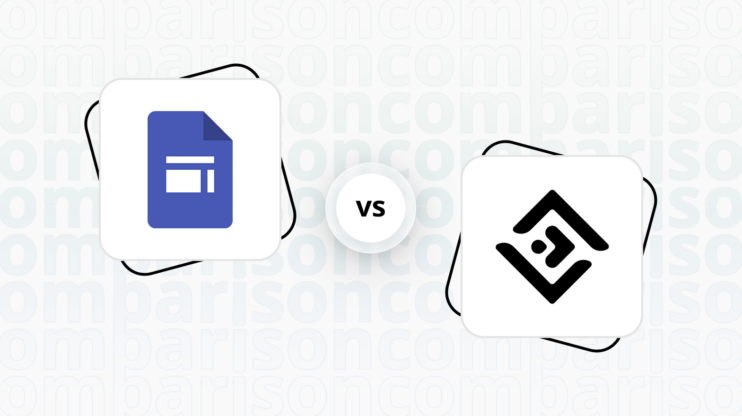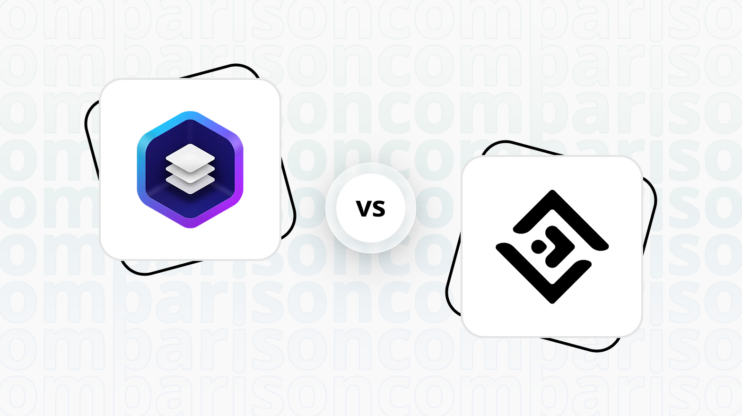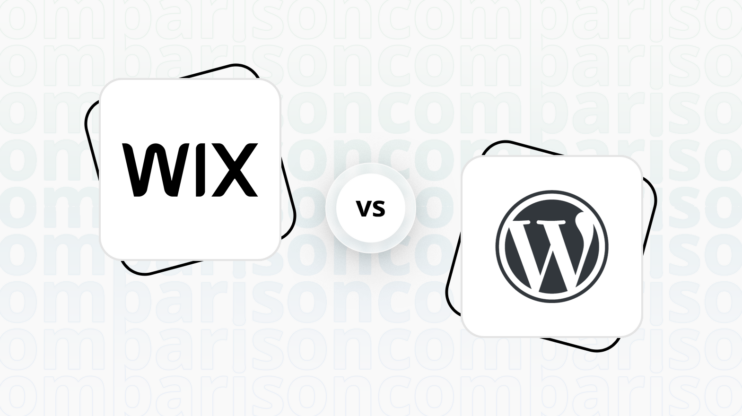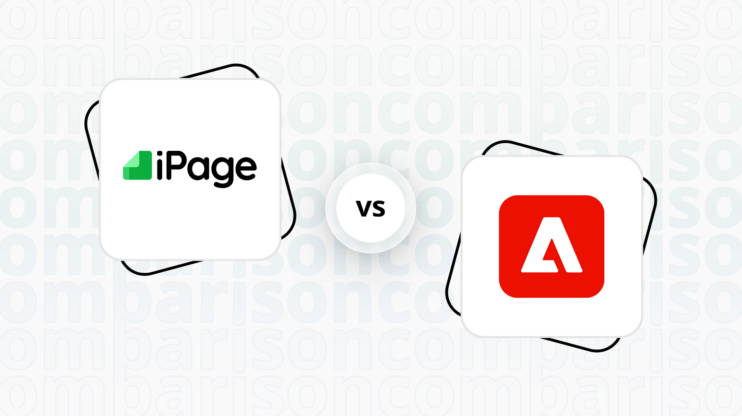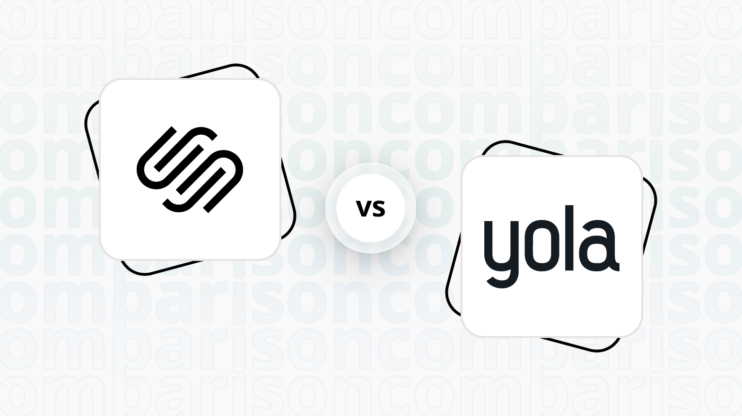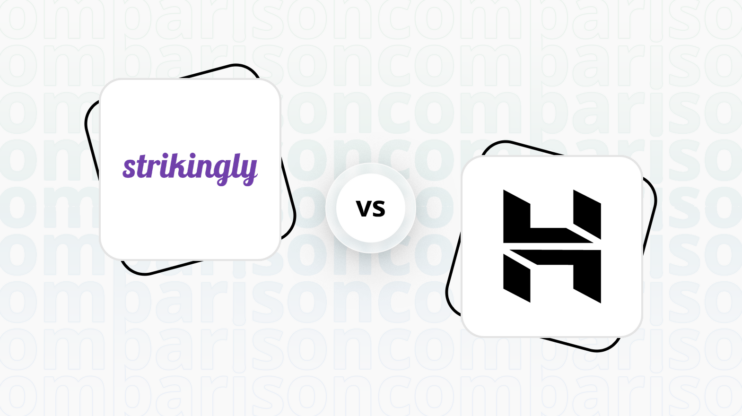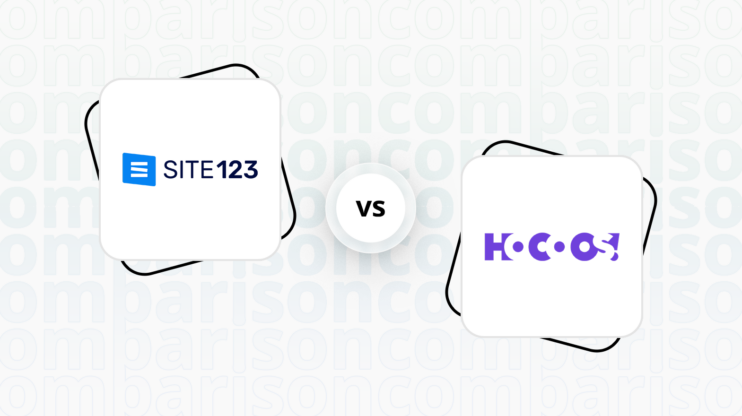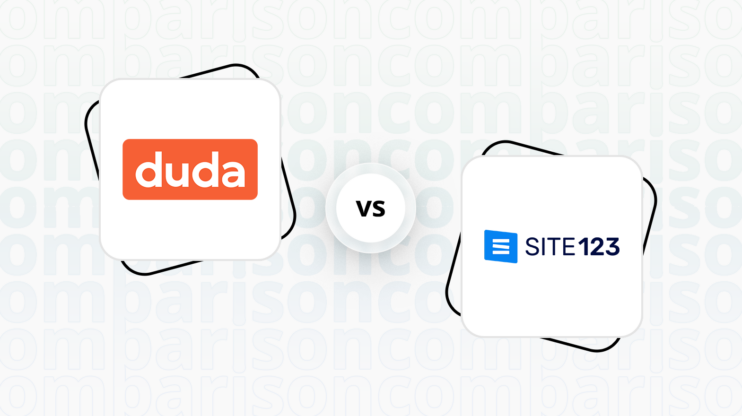Final verdict
Google Sites and Blocs offer distinct advantages for different user needs, with Blocs slightly leading in overall score.
-
Google Sites (Overall Grade: 5.6/10)
is best suited for users looking for a simple, collaborative platform integrated with Google’s ecosystem. It excels in user management, security, and customer support, making it a reliable choice for educational and small business projects that require straightforward, collaborative website creation without the need for advanced design features. -
Blocs (Overall Grade: 5.8/10)
, designed specifically for Mac users, stands out with its intuitive interface and robust design capabilities. It is the preferred option for users prioritizing aesthetics, with a wide range of templates and customization options. Blocs is particularly beneficial for designers and developers seeking a more sophisticated, visually appealing website without extensive coding.

|

|
|
|---|---|---|
|
Design functionalities & templates |
4.9 |
7.5 |
|
Ease of use |
8.3 |
8.7 |
|
Ecommerce |
1.8 |
7.0 |
|
Website Editors |
7.0 |
7.5 |
|
Product testing options |
6.9 |
7.0 |
|
Price |
8.1 |
9.0 |
|
Hosting quality |
8.2 |
0 |
|
Website speed optimization |
3.3 |
5.2 |
|
Plugins and integrations |
6.4 |
6.8 |
|
Marketing features |
2.6 |
6.9 |
|
Customer support |
7.2 |
5.1 |
|
Security |
9.3 |
0.0 |
|
AI capabilities |
0 |
5.4 |
|
User Management |
7.8 |
1.4 |
| Overall |
5.6 |
5.8 |
Best for ecommerce
 1.8
1.8
 7.0
7.0
Verdict
: For users looking to build an ecommerce site, Blocs offers a more robust platform with dedicated features and integrations, making it the superior choice over Google Sites for online store creation.
-
Google Sites
: Lacks built-in ecommerce capabilities, relying instead on third-party integrations for any ecommerce functionality. It’s more suited for informational sites or projects that require Google Workspace integration. -
Blocs
: Designed with ecommerce in mind, Blocs supports a range of ecommerce functionalities through integrations with leading service providers. It offers ecommerce-specific templates and customization options, making it ideal for creating professional online stores on Mac.
Best for informational & business websites
 7.2
7.2
 7.5
7.5
Verdict
: With a narrow lead, Blocs is slightly better suited for informational and business websites, especially for users prioritizing design and ease of use on Mac systems. However, Google Sites remains a strong contender for those seeking seamless integration with Google services and collaborative features.
-
Google Sites
: Offers a straightforward, no-cost option for creating informational websites, particularly effective for users deeply embedded in the Google ecosystem. Its collaborative features and ease of integration with Google services make it a practical choice for team projects and small business websites. -
Blocs
: Stands out for its design-centric approach and ease of use, particularly appealing to Mac users. With slightly higher scores in design functionalities and ease of use, Blocs is ideal for those prioritizing aesthetics and user experience in their informational or business website.
Detailed comparison
Design functionalities & templates
Design FunctionalitiesRepresents how well each platform allows for creative design and customization of websites.Score Components:
- Template Variety (30%): Range and quality of design templates.
- Customization (30%): Flexibility and options for design alterations.
- User Interface (20%): Ease and intuitiveness of the design process.
- Responsiveness (10%): Adaptability to different devices and screen sizes.
- Innovation (10%): Unique design features and tools.
 4.9
4.9
 7.5
7.5
🏆
Winner: Blocs.
If you’re looking for a platform that offers more creative control and a wide array of design features, Blocs is the preferred choice.
Google Sites offers a limited number of templates suitable for various purposes, from personal blogs to business websites, with both free and premium options available. These templates are designed for user engagement, simplicity, and functionality, allowing for customization to meet specific needs. However, compared to other website builders like 10Web or Squarespace, Google Sites might offer less variety in templates and design customization options.
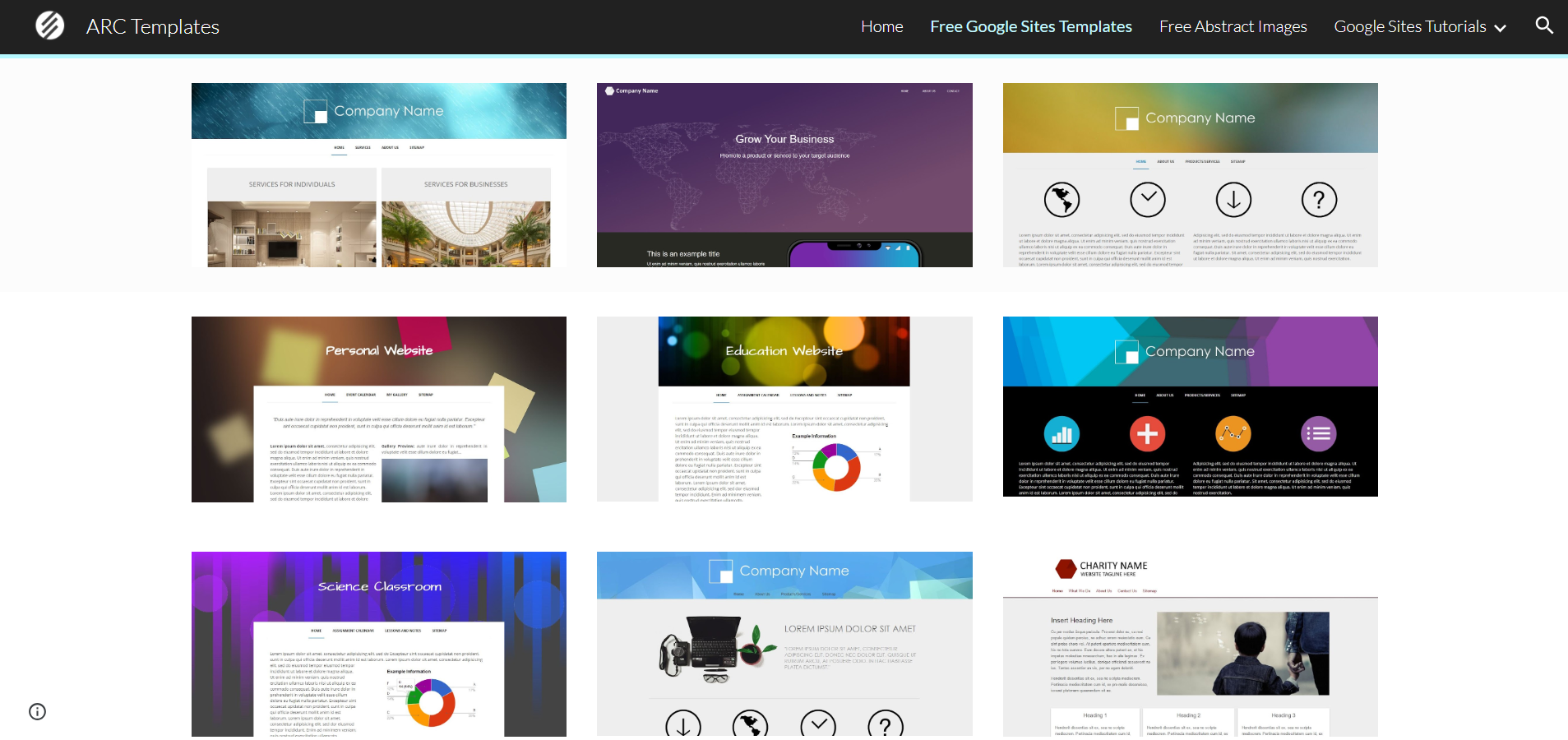
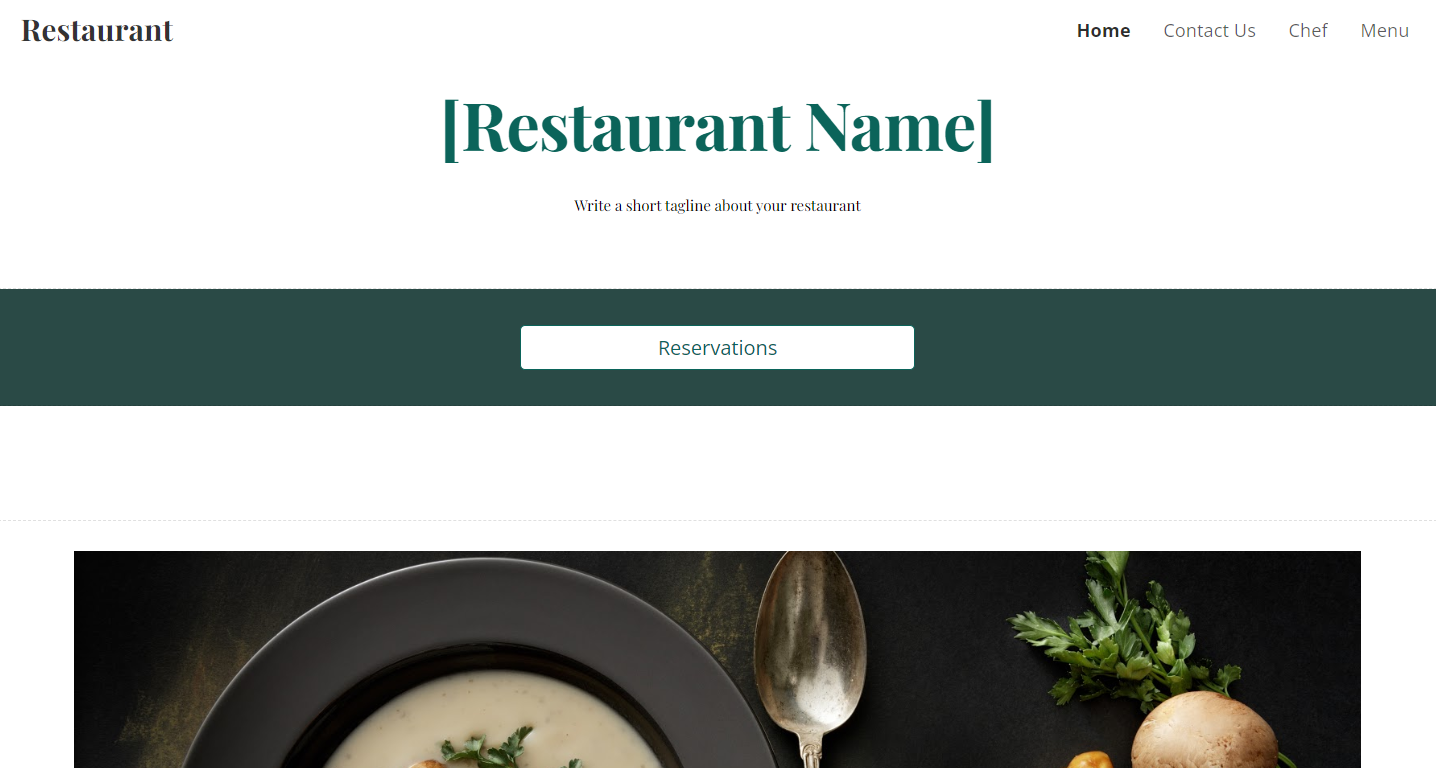
Compared to Google Sites, Blocs website builder offers a vast selection of design templates, boasting over 36 layouts for various website types, including business, e-commerce, personal portfolios, and photography, catering to a wide range of user needs. These templates are designed to be responsive, ensuring optimal display across different devices, from desktops to smartphones.
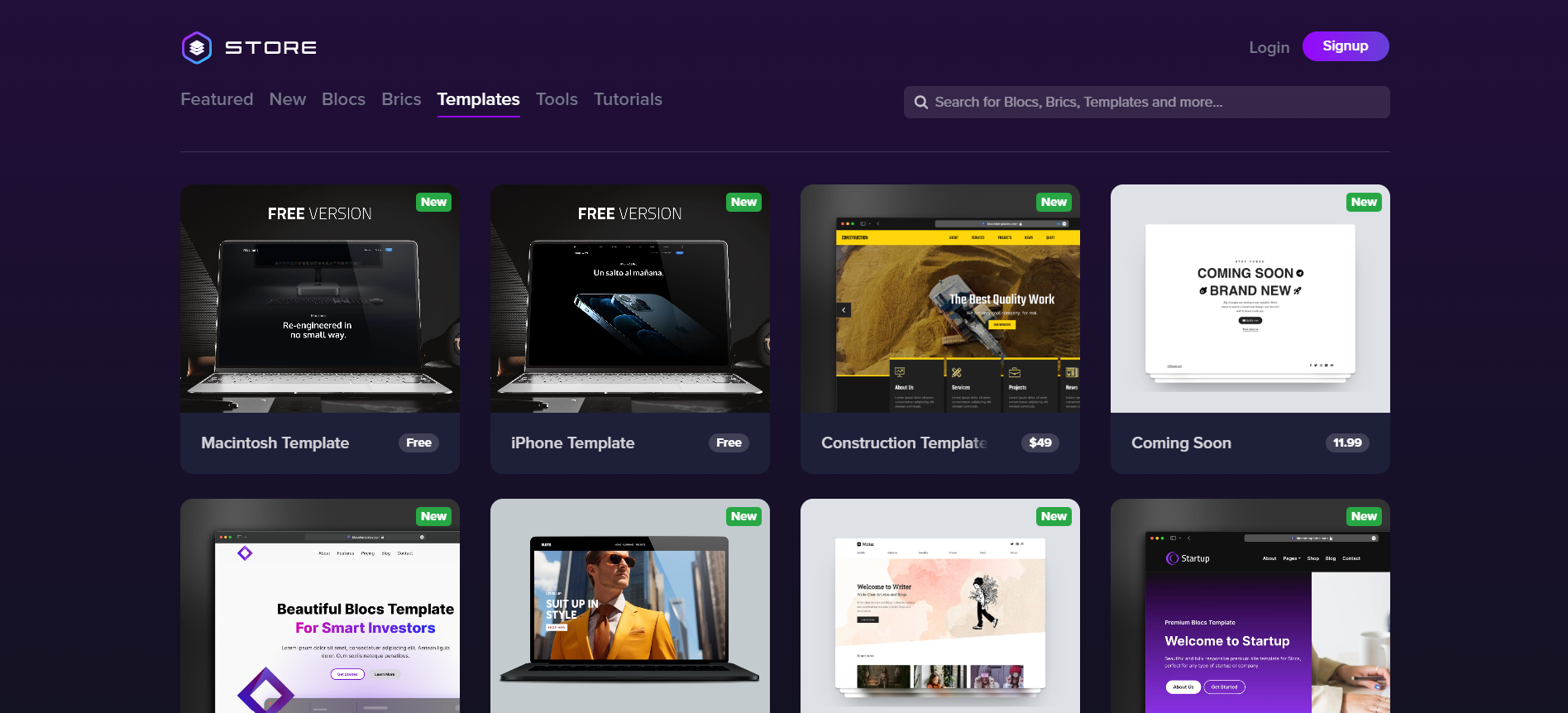
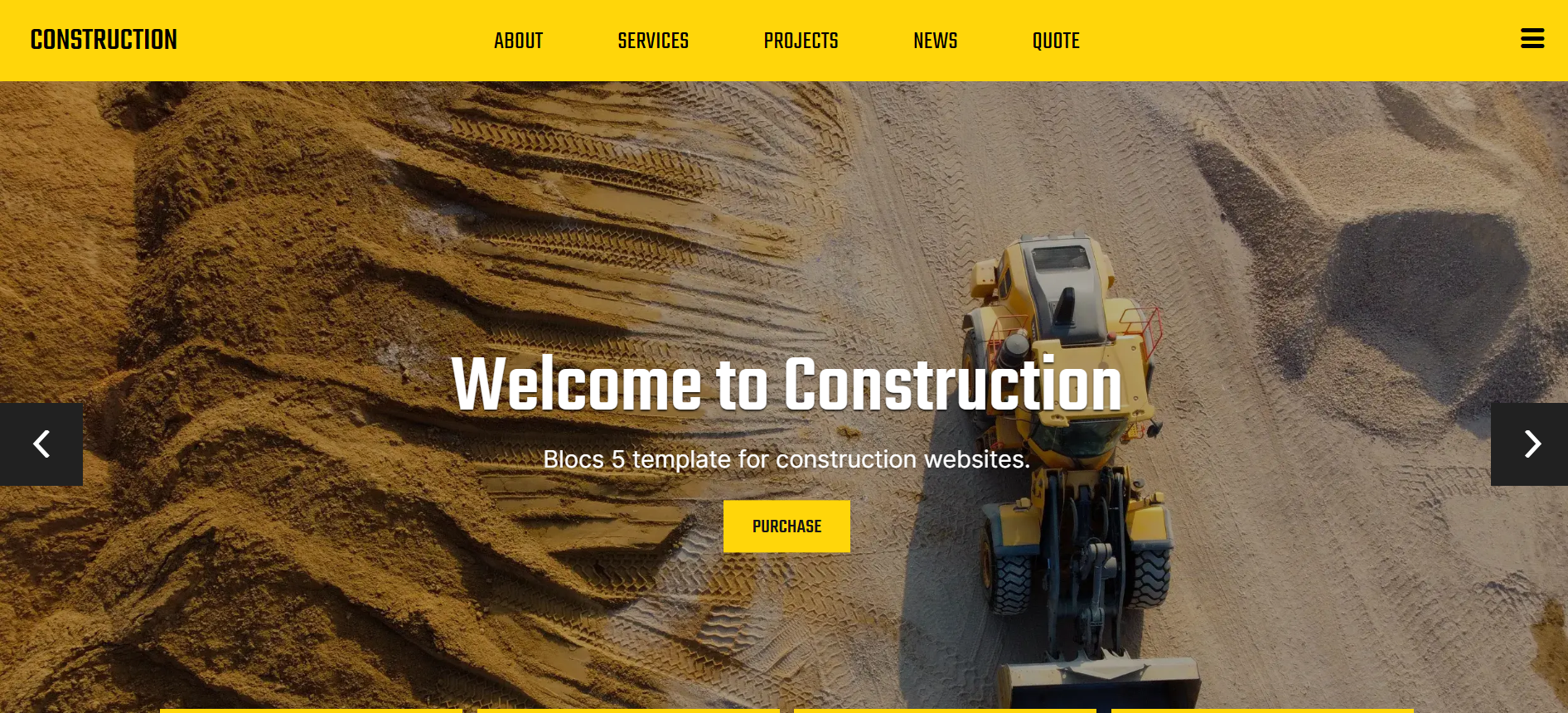
Get a head start on website creation with AI
Create a custom website tailored to your business needs 10X faster with 10Web AI Website Builder!
Ease of use
Ease of useReflects the platform’s overall user-friendliness.Score
Components:
- Learning curve (40%): Quickness and ease of getting started.
- Interface design (30%): Simplicity and intuitiveness of layout.
- User guidance (20%): Quality of tutorials and support.
- Flexibility (10%): Adaptability to various user skills.
 8.3
8.3
 8.7
8.7
🏆 Winner: Blocs
. With a score of 8.7, Blocs edges out Google Sites (8.3) in terms of ease of use. Blocs is praised for its user-friendly interface and versatility, making it a robust platform for both beginners and professional coders. Google Sites, while user-friendly and efficient for creating basic websites, lacks some advanced features that more experienced web developers might desire.
Learning Resources
🏆 Winner: Blocs
. Both platforms offer a wide array of learning resources, but Blocs goes a step further with its comprehensive suite of resources for web design, including the Blocs Academy and Blocs Master, which provide a wealth of tutorials and video courses.
For ecommerce
EcommerceMeasures the platform’s effectiveness in supporting online business activities.Score Components:
- Ecommerce themes and templates (20%): Variety and design of templates.
- Product management (25%): Ease of managing and organizing products.
- Payment options (25%): Variety and convenience of payment methods.
- Ecommerce features (20%): Features for managing an ecommerce store.
- Integration (10%): Compatibility with external e-commerce tools and services.
 1.8
1.8
 7.0
7.0
When it comes to ecommerce, Blocs has a clear advantage over Google Sites. While Google Sites does not have built-in ecommerce features, Blocs supports ecommerce through integration with leading service providers, enabling features such as buy buttons, checkouts, and complete storefronts with services like Ecwid, Stripe, Snipcart, Paddle, and Gumroad.

|

|
|
|---|---|---|
|
Ecommerce themes and templates |
0.0 |
7.8 |
|
Product page customization |
0.0 |
6.5 |
|
Payment processing and commissions |
1.0 |
7.0 |
|
POS capabilities |
0.0 |
0.0 |
|
Payment gateways |
2.0 |
7.5 |
|
Product numbers |
0.0 |
6.0 |
|
Additional ecommerce features |
0.5 |
7.2 |
Google Sites ecommerce features:
Google Sites itself does not have built-in eCommerce features. However, you can integrate eCommerce functionalities into a Google Sites website by embedding third-party tools or widgets, linking to an external eCommerce platform, or using buttons that link to payment processors. For instance, you could use Google Forms for order forms and integrate PayPal or another payment service for transactions. To have a full-fledged eCommerce platform with Google Sites, you’d need to rely on these external integrations or services.
Blocs ecommerce features:
- Stripe integration
- Snipcart shopping cart integration
- Gumroad integration
- Ecwid integration
Ecommerce themes & templates
Google Sites does not have any ecommerce templates. On the other hand, Blocs provides a range of ecommerce-specific templates, allowing users to quickly launch optimized online stores or business platforms. These premium templates, available through platforms like Blocs Templates, are designed to be fast, visually appealing, and SEO-friendly, ensuring websites look great on all devices and load quickly. With options like the “Shopping” and “Commerce” templates, Blocs offers a solid foundation for a responsive and engaging online store. Furthermore, templates receive lifetime updates, ensuring that sites stay up-to-date with the latest web standards and trends.
Product page customization
Google Sites lacks any product page customization features, as the products can be listed with embedding third-party platforms, all the customization can be done within the mentioned platforms. Blocs primarily offers ecommerce features through third-party ecommerce platforms such as Ecwid, so the product page customization possibilities vary depending on which platform is integrated.
Payment processing
You can integrate payment gateways into Google Sites using external tools or links, not through native features. This can be done by embedding HTML code for payment buttons from services like PayPal, Square, or Stripe, or by linking to an external checkout page. Third-party eCommerce widgets also offer a way to add payment functionalities. However, Google Sites doesn’t offer the comprehensive eCommerce capabilities that dedicated platforms provide.
The Blocs website builder supports ecommerce through integrations with third-party ecommerce providers, suggesting flexibility in the use of various payment gateways without directly listing them. Blocs does not charge transaction fees or commissions, however such fees may be charged by the payment gateways or e-commerce platforms themselves. Additionally, Blocs does not offer POS capabilities.
Website Editors
Website EditorsEvaluates the platforms’ website building and editing capabilities.Score Components:
- Customization tools (40%): Range and power of editing features.
- Editor usability (30%): User experience within the editor.
- Design flexibility (20%): Freedom in layout and design changes.
- Update and maintenance ease (10%): Simplicity of updating and maintaining the site.
 7.0
7.0
 7.5
7.5
🏆
Winner: Blocs
. Blocs, with a score of 7.5, offers a user-friendly web design tool that enables the creation of modern, responsive websites without needing to code. It utilizes a block-based interface with drag-and-drop functionality, making web design accessible to designers and creatives without technical backgrounds. The app offers a variety of pre-designed blocks, integration options, and SEO tools to streamline the website creation process. Blocs stands out for its intuitive design process, allowing users to quickly bring their website visions to life with minimal effort.
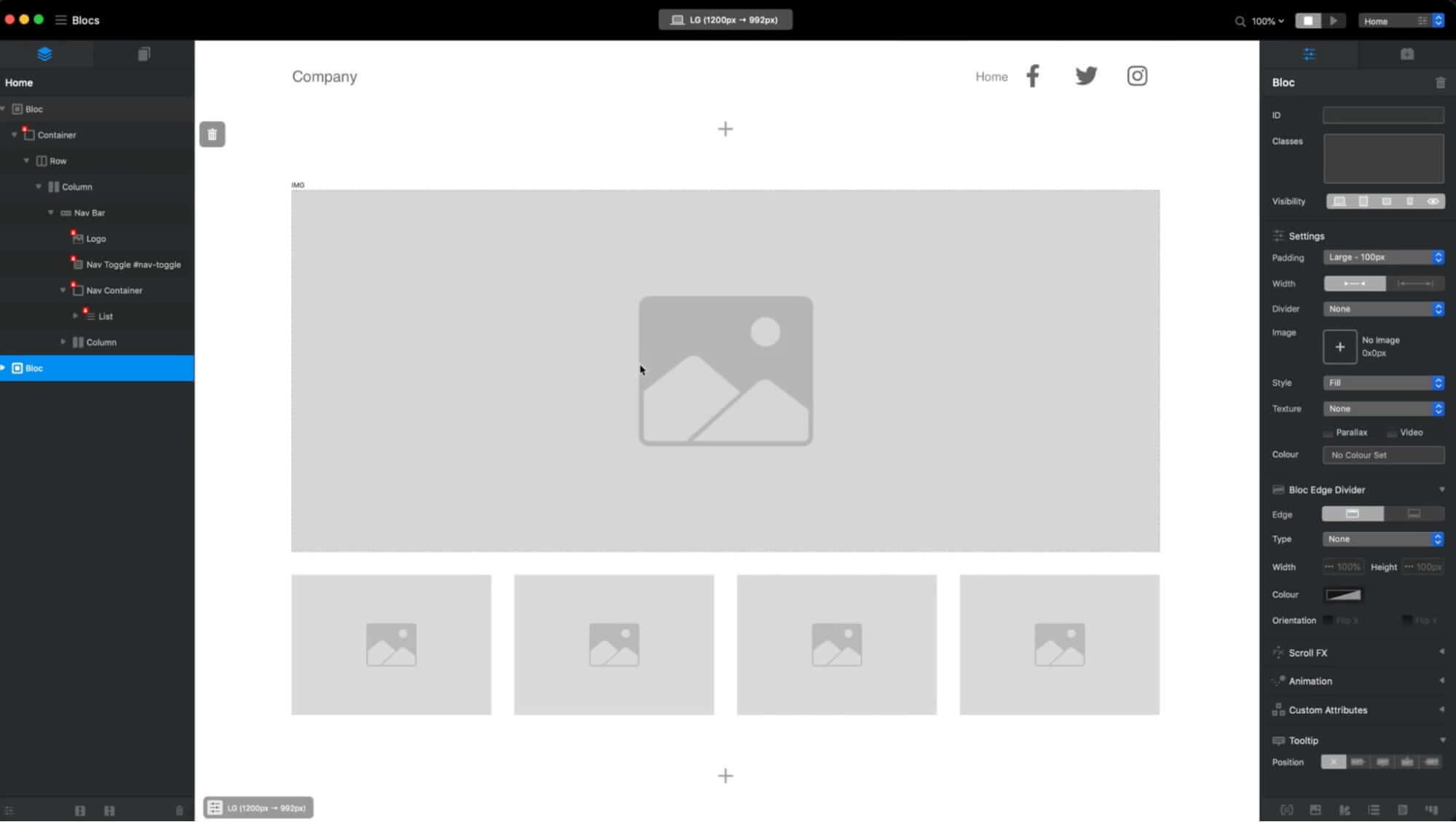
Google Sites, scoring 7.0, offers a user-friendly website builder editor that allows users to create and design websites without needing coding knowledge. With its drag-and-drop interface, users can easily add, customize, and arrange elements such as text, images, and videos on their web pages. It also provides a variety of templates and design options to help users get started quickly and ensure their site looks professional. Additionally, Google Sites integrates seamlessly with other Google services, enabling the incorporation of Google Docs, Sheets, Slides, and Maps directly into the website.
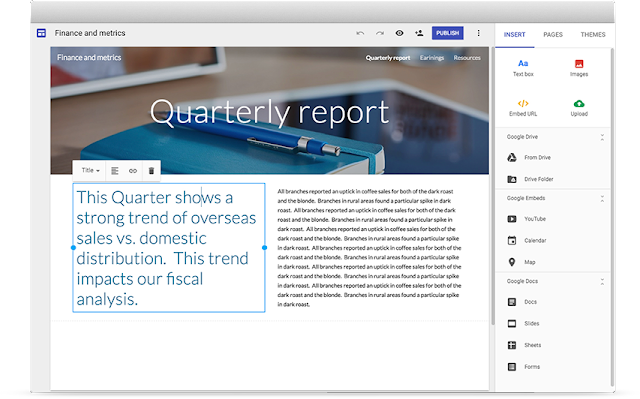
Mobile editor/app
 0
0
 8.5
8.5
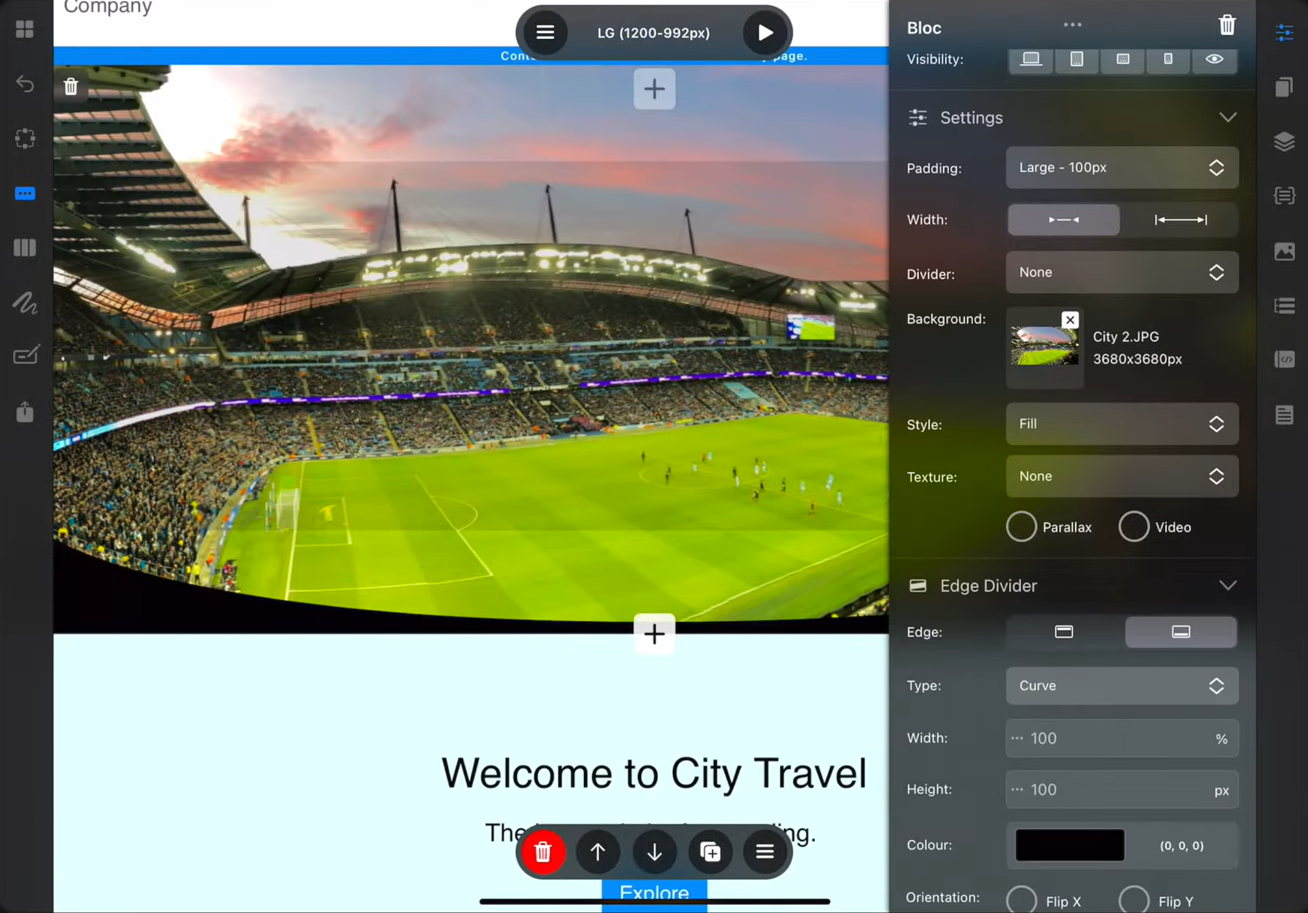
🏆
Winner: Blocs
. Google Sites does not offer a mobile editor app, which limits its accessibility and convenience for users who prefer to work on their websites from mobile devices. On the other hand, Blocs provides a mobile editor app specifically designed for the iPad. This app offers a touch-first interface and includes all the essential features needed to create various types of websites. This makes Blocs a more flexible and efficient solution for building professional and beautiful websites on an iPad.
Product testing options
Product Testing OptionsAssesses the options for trying out platform features before commitment.Score Components:
- Trial quality (40%): Extent and usefulness of the trial or free version.
- Feature accessibility (30%): How many features are available to test.
- Trial duration (20%): Length of the trial period.
- Ease of transition (10%): Smoothness of moving from trial to paid plans.
 6.9
6.9
 7.0
7.0
Overall Result
:
Blocs Wins
. Blocs scores slightly higher than Google Sites with a score of 7.0 compared to Google Sites’ 6.9. While both platforms offer trial versions and the possibility to test some premium features, Blocs has an edge with its 14-day money-back guarantee, which Google Sites does not offer.

|

|
|
|---|---|---|
|
Free Plan |
Yes | No |
|
Trial Duration |
14 days | Yes |
|
Testing Premium Features |
Possible within trial period | Possible with free trial and within 14-day refundable period |
|
Money Back Guarantee |
No |
14-day money back guarantee |
Price
PriceLooks at the cost-effectiveness and value for money of each platform.Score Components:
- Plan value (40%): What each pricing tier offers.
- Transparency and clarity (30%): Clearness of pricing structures.
- Flexibility of plans (20%): Range of options to suit different budgets.
- Hidden costs (10%): Additional expenses not included in the plan.
 8.1
8.1
 9.0
9.0
Blocs offers a one-time payment option, which can be more cost-effective in the long run, while Google Sites offers a range of subscription plans, including options for larger enterprises.

|

|
|
|---|---|---|
|
$0-$10 |
Business Starter ($7.20/month): This plan includes basic features suitable for individuals or small businesses, offering professional email through Gmail, 30GB of storage per user, and video meetings for up to 100 participants. It allows to manage 1 website and there is no limitation on number of pages. Value for price: 6.0 |
No offering at this amount. |
|
$10-$20 |
Business Standard ($14.40/month): Suitable for growing businesses, this plan provides 2 TB of storage per user, video meeting capacity for up to 150 participants with recording features, and access to smart booking pages and shared drives. It allows to manage 1 website and there is no limitation on number of pages. Value for price: 7.5 |
No offering at this amount. |
|
$20-$30 |
Business Plus ($21.60/month): Designed for larger businesses needing more robust capabilities, offering 5 TB of storage per user, advanced security options, and video meetings for up to 500 participants. It allows to manage 1 website and there is no limitation on number of pages. Value for price: 8.5 |
No offering at this amount. |
|
$40-$50 |
No offering at this amount. |
Blocs Plus (+$49.99): An add-on to the Blocs 5 plan, providing additional features such as the ability to build custom WordPress themes without writing code, extract typography, assets, and color schemes from any website, a productivity-boosting image editor, a class styles library manager, and an SEO helper. Value for price: 8.5 |
|
$90+ |
No offering at this amount. |
Blocs 5 ($99.99): This plan offers a native Mac app with no subscription required. It allows building unlimited websites, works offline, includes animations & scroll FX, powerful interactions, no page limit, font manager, writer mode, auto backup, all V5 updates, and email support. A Blocs license can be used on one Mac and all future Blocs V5 updates come for free. Value for Price: 8.0 |
location. As a result in rare cases the prices displayed here can differ from the ones you see on their
websites.
Hosting quality
Hosting
qualityExamines the reliability and performance of the hosting solutions.Score Components:
- Uptime (40%): Consistency and reliability of website availability.
- Speed (30%): Loading times and performance.
- Bandwidth and storage (20%): Sufficiency of resources provided.
- Data centers (10%): Quality and distribution of hosting infrastructure.
 8.2
8.2
 0
0
🏆
Winner: Google Sites
Google Sites offers cloud-based managed hosting with a 99.9% uptime guarantee and operates 21 data centers globally. On the other hand, Blocs does not offer hosting, which significantly impacts its hosting quality score. Therefore, Google Sites is the clear winner in this category.

|

|
|
|---|---|---|
|
Do they offer hosting? |
Yes, basic storage with 100MB free per site, can be increased by upgrading to Google Workspace |
No |
|
Data Centers: |
Google operates a total of 21 data centers across the globe: 2 in Asia, 5 in Europe, 13 in US and 1 in South America |
No hosting is offered |
|
Type of hosting: |
Cloud based managed hosting |
No hosting is offered |
|
Uptime: |
99.9% |
No hosting is offered |
|
Uptime Guarantee: |
Yes, 99.9% |
No |
Website Speed Optimization
Website Speed OptimizationEvaluates optimization of website loading timesScore Components:
- PageSpeed Score (30%): Google’s score indicating performance optimization.
- Loading Time (30%): The average time until a website is fully interactive.
- Mobile Optimization (15%): Optimization effectiveness for mobile devices.
- Resource Optimization (15%): Optimizing images, scripts, and other heavy resources.
- CDN Usage (10%): Use of CDN to enhance speed across geolocations.
 3.3
3.3
 5.2
5.2
🏆 Winner: Blocs
Both Google Sites and Blocs prioritize website performance and page speed, but Blocs has a higher website speed optimization score.

|

|
|
|---|---|---|
|
Focus |
Automated Optimization, CDN, Mobile Optimization, Browser Caching, Code Minification, Use of AMP |
WebP Generation |
|
Performance Tools |
Google Lighthouse, PageSpeed Insights |
Google PageSpeed Insights Integration |
|
Key Strategies |
Automated Optimization, CDN, Mobile Optimization, Browser Caching, Code Minification, Use of AMP |
WebP Generation |
|
Load Times |
Google does not disclose statistics about website Page Speed scores, or load times |
Load times and PageSpeed scores vary depending on optimization and website complexity |
|
Page Speed Scores Range |
Google does not disclose statistics about website Page Speed scores, or load times |
Load times and PageSpeed scores vary depending on optimization and website complexity |
|
Core Web Vitals Improvement |
Emphasis on LCP, FID, CLS improvements |
Blocs does not disclose any information about its Core Web vitals improvements |
Google Sites, a structured web page-creation tool, focuses on automated optimization, CDN, mobile optimization, browser caching, code minification, and the use of AMP for speed optimization. However, Google does not disclose specific statistics about website Page Speed scores or load times. It emphasizes on LCP, FID, CLS improvements for Core Web Vitals.
On the other hand, Blocs, a website builder designed specifically for Mac users, uses WebP Generation as its key strategy for speed optimization. The load times and PageSpeed scores vary depending on optimization and website complexity. Blocs does not disclose any information about its Core Web vitals improvements. Despite the lack of disclosed information, Blocs has a higher website speed optimization score compared to Google Sites.
Get a head start on website creation with AI
Create a custom website tailored to your business needs 10X faster with 10Web AI Website Builder!
Plugins and integrations
Plugins and integrationsMeasures the range and effectiveness of additional plugins and integrations.Score Components:
- Variety of options (40%): Range of available add-ons.
- Integration smoothness (30%): Ease of integrating plugins into the site.
- Quality of plugins (20%): Functionality and reliability of the options.
- Custom integration capabilities (10%): Support for custom or third-party integrations.
 6.4
6.4
 6.8
6.8
🏆 Winner: Blocs.
With a score of 6.8, Blocs edges out Google Sites (6.4) in the plugins and integrations category. Blocs offers a variety of custom-made add-ons and extensions that enhance web design capabilities, facilitating a richer web development experience. On the other hand, Google Sites offers a wide array of plugins and extensions to enhance website functionality, catering to various needs such as social media integration, e-commerce, chats, forms, video, audio, and more. However, the depth and breadth of Blocs’ offerings give it the upper hand in this category.

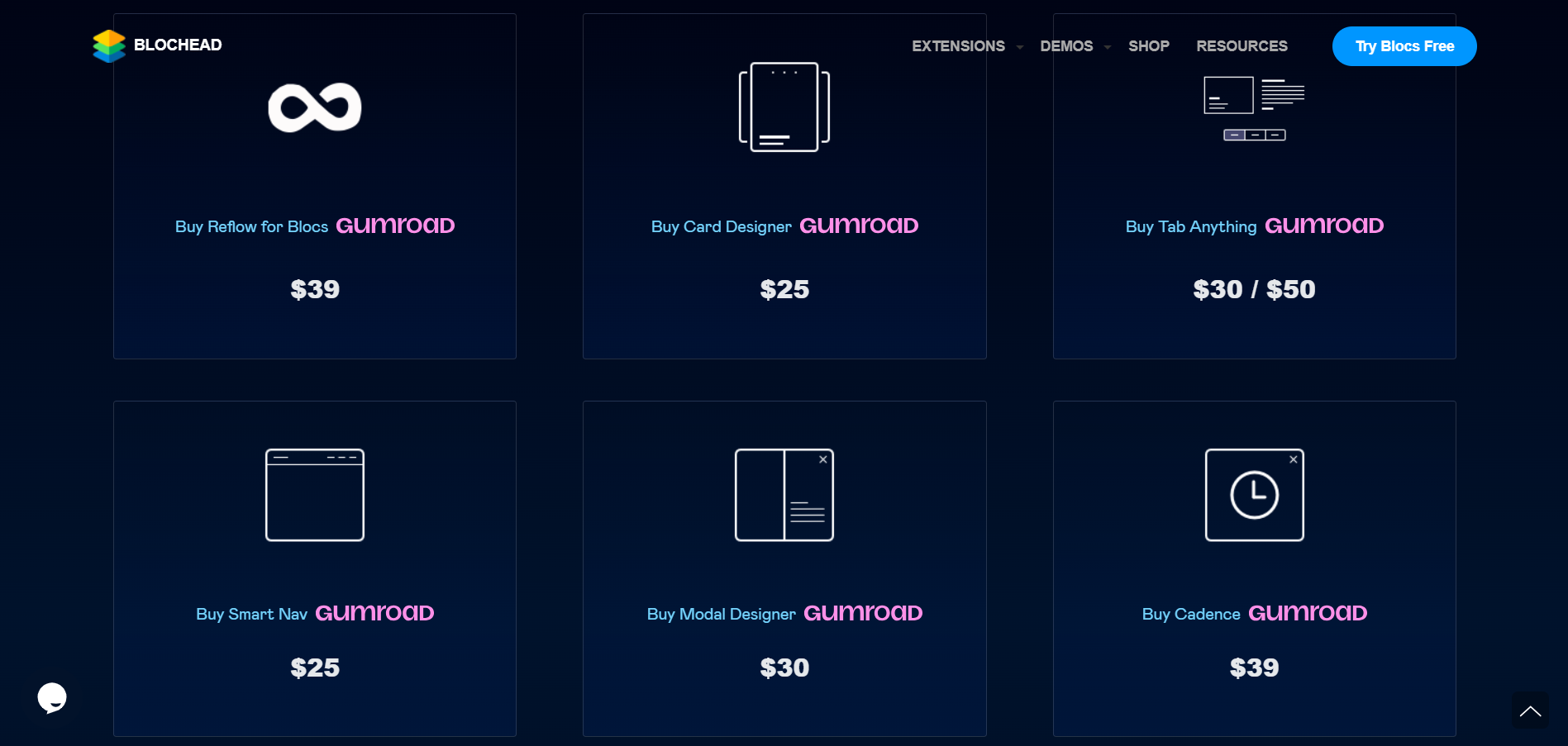
Marketing Features
Design FunctionalitiesRepresents how well each platform allows for creative design and customization of websites.Score Components:
- Template Variety (30%): Range and quality of design templates.
- Customization (30%): Flexibility and options for design alterations.
- User Interface (20%): Ease and intuitiveness of the design process.
- Responsiveness (10%): Adaptability to different devices and screen sizes.
- Innovation (10%): Unique design features and tools.
 2.6
2.6
 6.9
6.9
🏆
Overall Winner: Blocs
. Blocs stands out for its more advanced marketing tools, especially in SEO, email marketing, and blogging. Google Sites is strong in social media integration and analytics, but lacks in email marketing and blogging.
| Marketing Features |

|

|
|---|---|---|
|
SEO Tools |
Basic SEO settings | Advanced SEO helper |
|
Email Marketing |
No | Yes, with Mailchimp integration |
|
Blogging |
No | Yes |
|
Social Media Integration |
Yes, with manual methods | Yes, with API integration |
|
Analytics and Reporting |
Yes, with Google Analytics integration | Yes, with Google Analytics integration |
|
Ads and Promotions |
No | Yes |
Customer Support
Customer supportEvaluates the quality and availability of support options.Score Components:
- Response time (40%): Speed of support responses.
- Support quality (30%): Effectiveness and helpfulness of the support.
- Availability (20%): Range of support channels (phone, chat, email).
- Resource richness (10%): Quality of self-help and educational materials.
 7.2
7.2
 5.1
5.1
🏆 Winner: Google Sites
. Google Sites offers a more comprehensive customer support system, including 24/7 support for critical issues to eligible customers and a variety of self-service resources. Users can access the Help Center and community forums for assistance, and direct support is available to Google Workspace customers.
On the other hand, Blocs relies heavily on self-service resources, primarily offering support through articles and a community forum. However, it lacks direct, personalized support, which may leave some users feeling unsupported, particularly when they encounter complex issues. Furthermore, Blocs does not offer enterprise-level support, making Google Sites a more suitable choice for larger organizations.
Security
SecurityLooks at the platforms’ security measures and data protection.Score Components:
- Data protection (40%): Safeguards for user and customer data.
- SSL and encryption (30%): Implementation of secure connections.
- Compliance (20%): Adherence to industry security standards.
- Regular updates (10%): Frequency of security updates and patches.
 9.3
9.3
 0.0
0.0
🏆
Winner: Google Sites
. Google Sites, part of the Google Workspace, ensures robust security measures including data encryption in transit and at rest, strict access controls with two-factor authentication, and adherence to international data protection regulations like GDPR. It offers customized security settings, such as data loss prevention and advanced threat protection, to safeguard against unauthorized access and cyber threats. Additionally, Google Sites benefits from Google’s regular security updates, access controls, and compliance with international data protection standards, ensuring a secure environment for website creators and visitors.
On the other hand, Blocs does not disclose any information about their private data storage and protection measures. As Blocs is an offline website builder and does not offer hosting, security measures vary widely depending on the hosting provider users choose. This lack of transparency and dependence on third-party hosting providers for security makes Blocs a less secure option compared to Google Sites.
AI Capabilities
AI capabilitiesMeasures the effectiveness of AI-driven features and tools.Score Components:
- Automation efficiency (40%): Impact of AI on streamlining processes.
- Personalization (30%): AI-driven customization for users or customers.
- AI-Assisted design (20%): Role of AI in website design and functionality.
- Data analysis (10%): Use of AI in interpreting user data and analytics.
 0
0
 5.4
5.4

|

|
|
|---|---|---|
|
AI Builder |
|
|
|
AI Ecommerce features |
|
|
|
AI content generation |
|
Blocs incorporates an innovative AI Assistant for content generation and editing |
🏆 Winner: Blocs
. Blocs, with a score of 5.4, incorporates an innovative AI Assistant that enhances the user experience by allowing for the generation and editing of content directly within a Blocs project. This feature is accessible through the Main Menu or a keyboard shortcut, offering seamless integration. Furthermore, by leveraging ChatGPT’s capabilities and requiring an OpenAI API key, users can significantly enhance the assistant’s accuracy and functionality, choosing from actions like Generate, Edit, and Chat based on their specific needs. The AI Assistant also supports selecting target areas within the project for content generation or modification, including textual content on the design canvas and code within the Blocs Code Editor, facilitating a versatile and interactive design process.
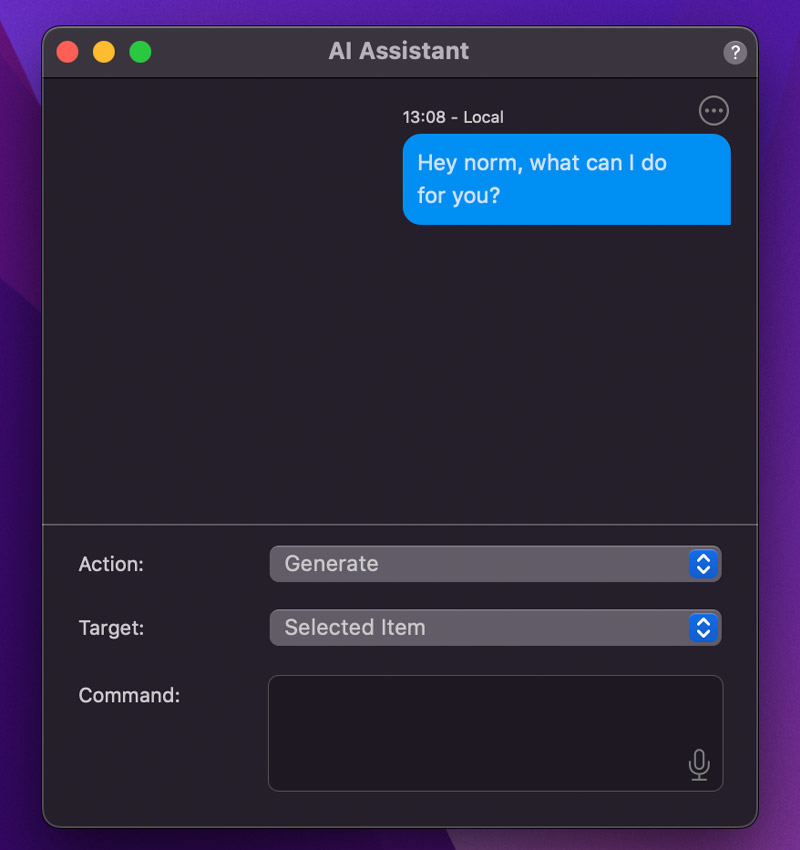
Google Sites, on the other hand, does not have any AI capabilities.
User Management
User ManagementAssesses the platforms’ capabilities in managing user roles, permissions, and accessibility.Score Components:
- Role Customization (40%): Flexibility in creating and defining user roles and
permissions. - Ease of Management (30%): User interface and tools for managing users.
- Access Control (20%): Effectiveness of access control measures for different user
levels. - Scalability (10%): Ability to manage a growing number of users efficiently.
 7.8
7.8
 1.4
1.4
🏆 Winner: Google Sites
. Google Sites and Blocs have different approaches to user management.
- Google Sites allows multiple users to collaborate with different roles, including Owners, who have full control, and Editors, who can modify content but not site settings. There’s no strict limit on the number of users who can edit a site, allowing flexibility in management and development. Viewers can only see the site, with no editing permissions. This structure supports collaborative website building with varied levels of access and control for different users.
- Blocs, on the other hand, allows only one user to build and edit a website. This could limit the platform’s usability for larger teams or projects that require collaboration.
Unfortunately, there are no user roles and access levels tables available for these platforms.
Additional Features

|

|
|
|---|---|---|
|
SSL Certificate |
|
|
|
Custom Domain |
|
|
|
Free Custom Domain Included |
|
|
|
International Domains |
|
|
|
Mobile Responsive |
|
|
|
Page Speed |
|
|
|
Website Builder Mobile App |
|
|
|
Convert a Website To An App |
|
|
|
Website Analytics |
|
|
|
Multilingual Sites |
|
|
|
Multiple Users |
|
|
User Feedback
Google Sites, part of the Google Workspace, is highly praised by users for its seamless integration, ease of use, and collaborative features. It is a preferred solution for various professional and educational needs. The platform’s simplicity and user-friendly interface are lauded, enabling effortless website creation and sharing of information within organizations. However, some users desire more customization options and additional features. Despite this, Google Workspace remains highly valued for its versatility and streamlined workflow facilitation.
On the other hand, Blocs website builder is commended for its intuitive drag-and-drop interface, making it accessible to users with varying levels of web development expertise. Its extensive library of templates and customization options, including the ability to add custom CSS and JavaScript, facilitates the rapid creation of diverse and visually appealing websites. However, users report encountering bugs and express a desire for more sophisticated customization features, indicating room for improvement. Despite its learning curve and occasional technical glitches, Blocs is valued for significantly streamlining the web design process, supported by a strong community and educational resources.
The making of this blog
We followed a clear, step-by-step process to write and research this article.
FAQ
Which platform is better for Mac users, Google Sites or Blocs?
Can I use Google Sites and Blocs for ecommerce?
How do Google Sites and Blocs compare in terms of design and customization?
Which platform offers better hosting quality?
Are Google Sites and Blocs suitable for beginners?
Which platform is more affordable, Google Sites or Blocs?










